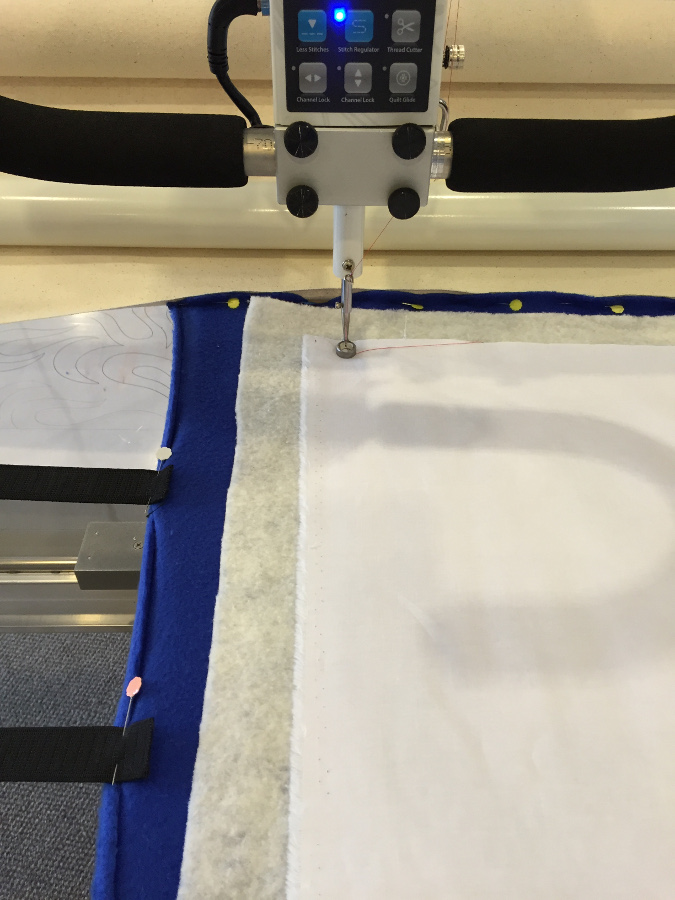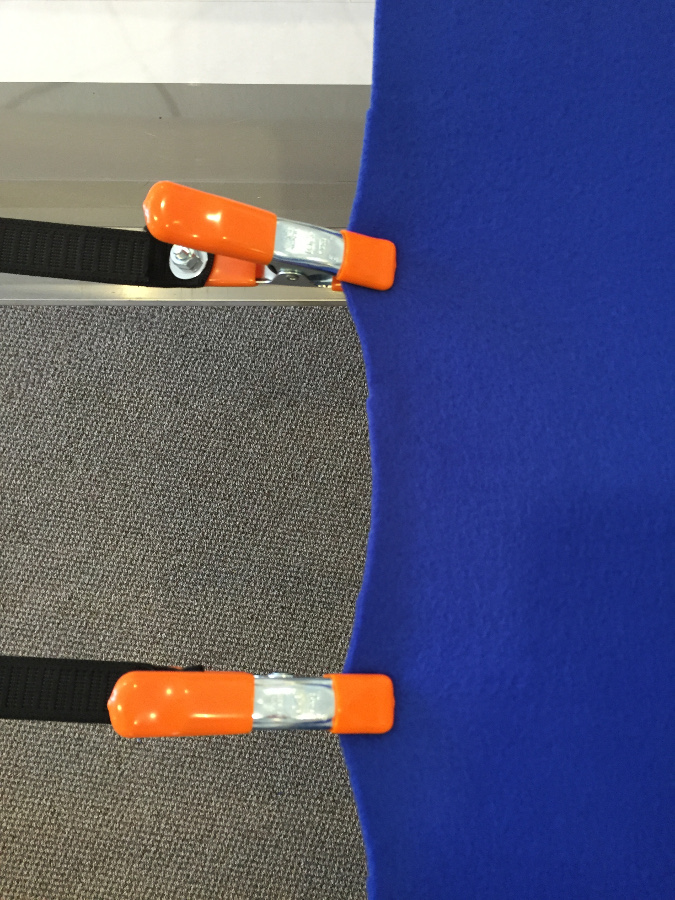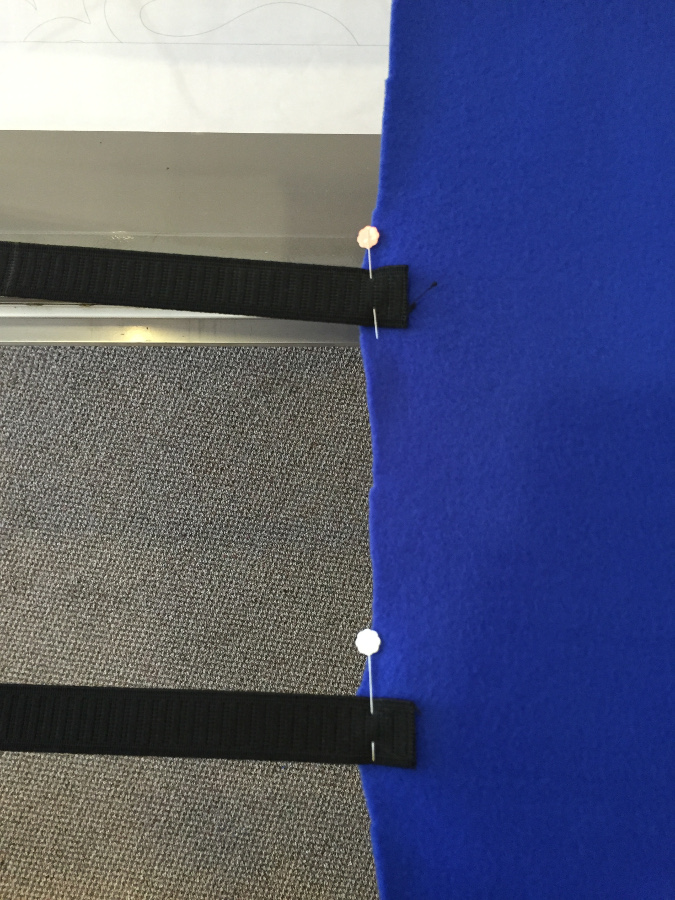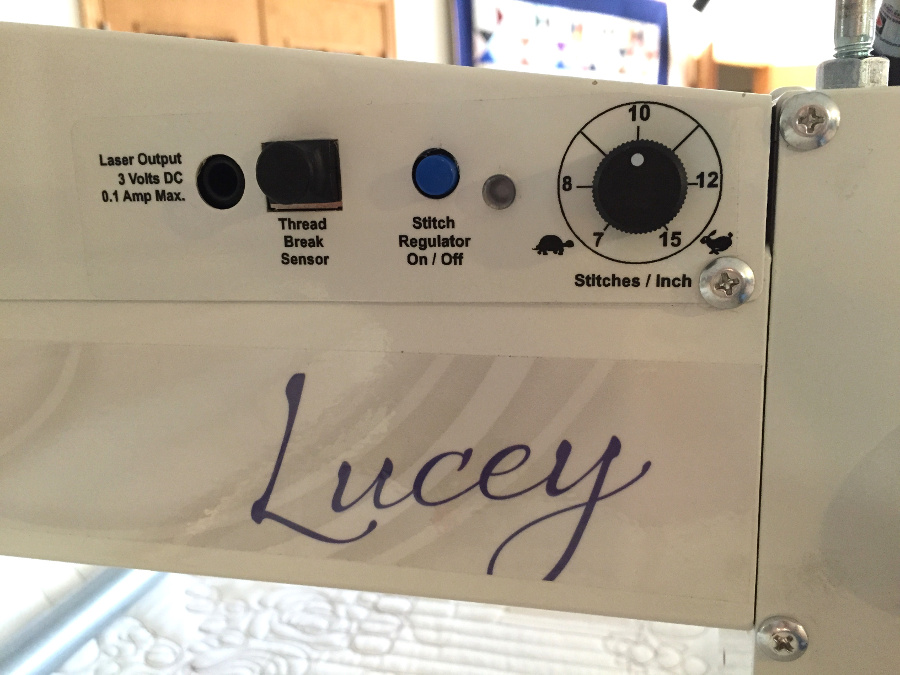Tips for using fleece, flannel or nappy knits for backing fabric
Many quilters love to make cuddly quilts using fabric like polar fleece, flannel, or nappy knits like Minky or Shannon fabrics. These sure make a quilt snuggly but can present challenges for longarm quilters because of their loft, stretchiness, nap or grainline. And both the flannel and Minky knit fabrics will leave your sewing room in a cloud of lint and dust. Have your vacuum at the ready and wear a light-colored shirt when you work with these linty fabrics. Otherwise you’ll be pulling tiny specks of lint and dust bunnies off your clothing for weeks!
Each of these fabrics introduces unique properties that may require adjustments to the way you may normally quilt. However, the single common characteristic they all share is some degree of stretchiness.
Minky fabric stretches as much as three inches when pulled across the grain line but is mostly stable alone the lengthwise grain line. However, fleece stretches in both directions. It can stretch over three inches along the lengthwise grain, and as much as five inches or more along the cross grain. That’s why it is a popular fabric for active wear and outer wear. Flannel stretches more across the grain than most woven fabric due to its lower thread count and brushed texture, but it remains stable along the lengthwise grain.
Longarm machine quilters have a dilemma about which way to load this stretchy fabric. Personally I have had the most success by loading these fabrics so that the selvage is perpendicular to the rollers.

This means that I’m pinning the cut edge of the stretchy fabric to my pick up and backing rollers, and the selvedge edges are actually parallel to the side legs on my quilting frame. Remember that the lengthwise grain on fabrics stretches the least. Loading these stretchy fabrics this way means that they will NOT stretch much from roller to roller. That is key to keeping the quilt as flat as possible and to reduce the risk of bubbles and puckers.
Another issue that longarm quilters must address is how to properly adjust the side clamps on your quilting frame. With stretchy fabric, even the lightest weight clamp can distort the edges of your backing.

If you have that issue, simply reverse the clamp and grab the loose elastic end. Pin that to the edge of the backing instead of using the clamp as you see in this photo.

Adjust the pressure as you normally would. You can still pull too tightly with this trick, but it will eliminate the weight of the clamp as a variable, and it is especially helpful if your quilt is small but your frame is very long!
For all of these unique fabric types, it’s good to make a test sandwich so that you can check your tension, adjust the pressure of your foot if needed, and find the appropriate stitch length. You should also quilt the test sandwich with the same density of quilting you intend to use for your main project to make sure the fabric still handles and drapes the way you want it to. Larger, more open quilting will help keep the quilt soft and cuddly.
These fabrics will typically look better with a longer stitch length of about 10 stitches per inch or so.

This keeps the nap from matting down and also helps reduce puckering that a shorter stitch length can cause. On fleece and Minky you may also find that polyester thread gives you better results than cotton since it is smoother and will glide through the fabrics better, reducing breakage and missed or skipped stitches.
If you haven’t ever tried one of these specialty fabrics before, keep an eye on the remnant bin at your local quilt shop and pick up a few pieces to try. Just two small swatches can make a cuddly car seat blanket for somebody’s bundle of joy, and you can gain some experience while wrapping a little one in warmth and love!



